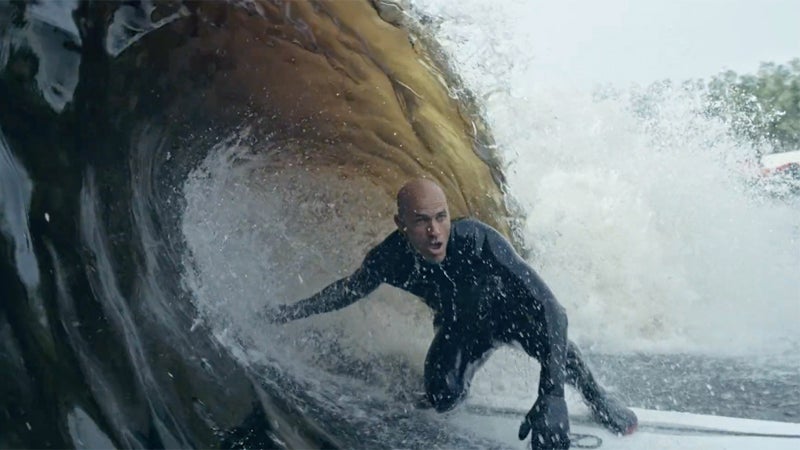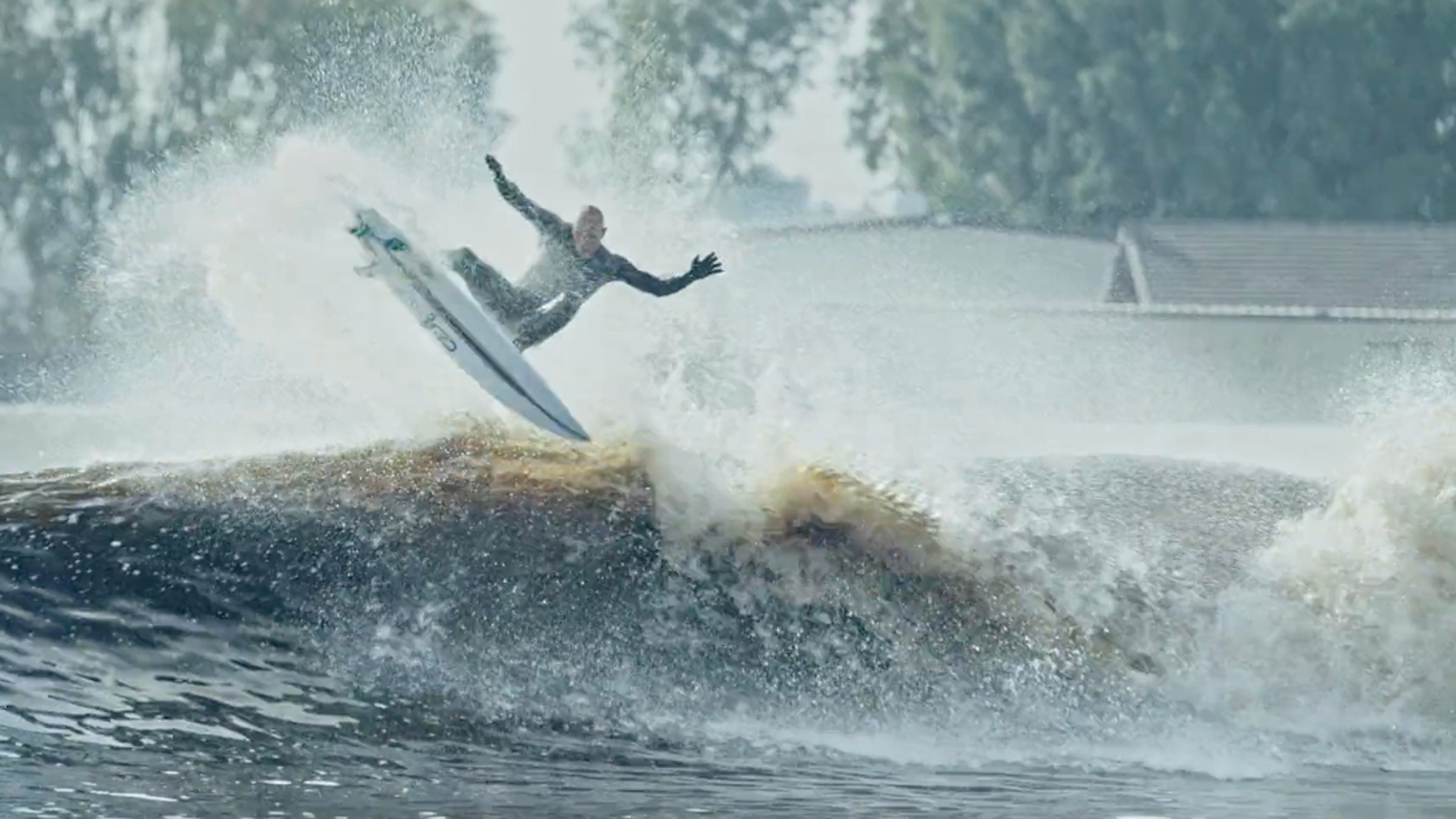On December 18, Kelly Slater released footage of himself surfing a man-made wave. And though the pond-bound break is a far cry from the idyllic ones we’re used to frothing over, it’s the most exciting surf video in years.
There are a few unique things about the wave. For one, the 11-time world champion surfer designed it himself, with help from the geniuses at . The barrelling, head-high wave breaks flawlessly and without fail to produce a 45-second ride. Its face, speed, power, and shape put it in league with world-class breaks—something no other artificial wave has managed before.
“There have been a lot of attempts to incorporate artificial waves into the sport, or even just into a training forum,” says Dave Prodan, vice president of communications for the . “I think that in terms of replicating a shape that’s desirable for training, Kelly is head and shoulders above what we’ve seen before.”
So far, Slater and his team have released very little information about their future plans for the project or how the technology, which has been under development for the past decade, works. But it’s markedly different than anything else out there.
“The surfing community’s consensus is that this is the best artificial wave that’s ever been created.”
Every waterpark worth its snack bar boasts a wave pool. Generally, these oversized swimming pools create waves by pumping walls of water through hydraulic tanks. The waves are more brute force than studied design, and it’s reflected in the result: that offer as much to top-notch athletes as ripples on a lake. Even , which manages to make nine- to 10-foot waves using a similar technique, only gives surfers rides of a few seconds.
The man-made waves outside the waterpark are a bit better. uses patented hydrofoil technology to create breaks with better shape and longer rides than their pumped counterparts, using a fraction of the energy. With an eye on recreation and competition, Wavegarden plans to open its first U.S. location in Austin, Texas, in 2016. The company claims it’ll offer 35-second rides with wave ranging from one to six feet.
But while Wavegarden is something you can surf, Slater’s wave is something you want to surf. “From what we can see from Kelly’s video,” Prodan says, “I think the surfing community’s consensus is that this is the best artificial wave that’s ever been created.”

Just about everyone in the surfing world is itching to paddle into the prototype wave, yet, predictably, some are concerned about the impact of separating the wave-riding experience from the surfing lifestyle.
“We are at the whim of nature and the ocean to find conditions conducive to the act of surfing,” says Travis Ferré, co-founder and editor of , a leading independent freesurf magazine. “This new wave pool has taken out 90 percent of the journey, the lunacy, and now presents surfing simply as the act of riding on a wave, depleting it of all the mystery that comes with searching and living like us.”
Commodifying surfing runs the risk of diluting what makes the culture so interesting, Ferré argues. But he’s reassured by Slater’s involvement. “I must say that if there’s one person who would be doing this for the right reasons, it would be Kelly Slater,” he says. “As core as I’d like surfing remain, I would not elect anyone but Kelly Slater to bring something like this to the world.”


